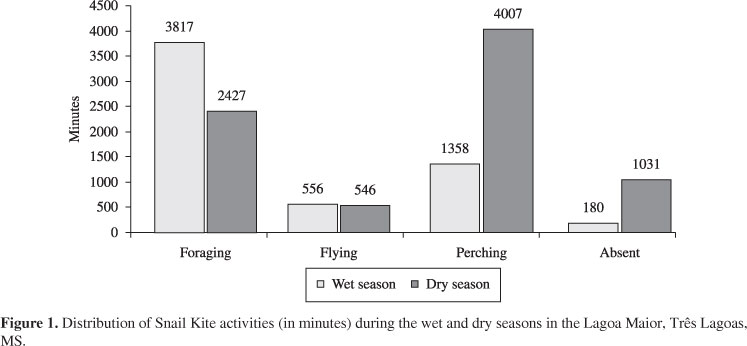The foraging, territoriality and displacement of the Snail Kite were studied over 232 hours of observations in an urban lake during the dry and wet seasons. The temperature and rainfall variations were used to correlate with predation rates and the correlation coefficients were 0,39 and 0,34, respectively. Snail Kites spent more time foraging during the wet than the dry season when perching is more frequently recorded. The higher predation in the wet season can be explained by the higher abundance of apple snails and the energy demand for reproduction. In the wet season, the territories were smaller and the conspecific conflicts decreased as prey were more available. However, due to the lack of food in the dry season, intra-specific conflicts and expansion of male territories were observed and the female and immatures were expelled from their foraging area to another location. In this way, site tenacity of Snail Kites should be interpreted in relation to the variations on food and dominance gradients according to the temporal changes (time) and foraging sites (space).
feeding; territoriality displacement; freshwater raptors; Brazil




